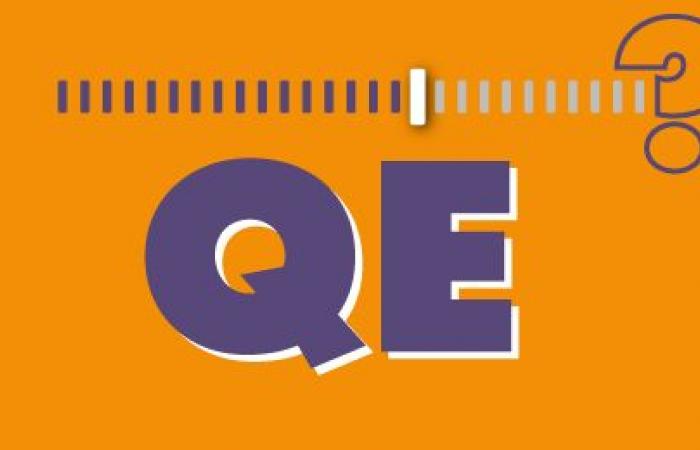Support for the quantitative easing
Many economists, particularly within central banks, consider that QE has a clear positive impact on the economy. They thus invoke the transmission channels detailed earlier in the dossier. In an economic crisis, with policy rates already close to zero, QE is an ingenious way to make monetary policy more accommodative. Ben Bernanke, a specialist in the 1929 crisis and governor of the Federal Reserve from 2006 to 2014, defends this point of view. However, he places this tool as an element to be used only in crisis situations, and therefore in the relatively short term.
Andrew Haldane, economist at the Bank of England (BoE) for over thirty years, also defends the benefits of QE: according to his teams’ estimates, his first QE would have allowed growth of 2%, and inflation of 1.5%. For Haldane, it is above all the announcement channels (signal channel, confidence channel, and exchange rate channel) that are the most active. However, he admits that the effect of QE is much more visible on intermediate objectives (interest rates, asset prices, etc.) than on final objectives (inflation and growth). Also, Haldane specifies a certain instability of the effects of QE in space and time.
Quantitative easing and hyperinflation
However, many criticisms and remarks have been made about quantitative easing.The first was the risk of inflation or even hyperinflation. The reasoning seems to make sense: the central bank injects a lot of reserves, so banks can lend a lot, which increases the money supply, and therefore prices. However, it can be said that nothing like this has ever happened. Most of the time, this comes from a confusion between central currency and money supply. QE increases central currency, which is not used in the economic circuit. The impact of QE can only be indirect, through the different transmission channels.
There is a more subtle version of this inflation fear, through the “multiplier theory”. The rise in central bank money would give almost infinite money-creating power to banks, which would then throw themselves headlong into lending, inflating the money supply, and causing inflation. This possibility is highly unlikely, as we will detail below.
Quantitative easing and financial stability
Many economists have also raised the risk that QE poses to financial stability. Indeed, the liquidity produced by QE mainly passes through the financial system. It affects the real economy only very indirectly, and can contribute to the development of speculative bubbles. The asset price channel, typically, can constitute the beginning of a surge in stock prices. This is also the result of research by three economists from the Bank of the Netherlands (Tom Hudelpohl, Ryan van Lamoen, and Nander de Vette). However, there is no consensus on this subject.
Quantitative easing and inequalities
Several economists point out that the quantitative easing mainly benefits those who own capital (real estate, shares, etc.) and therefore excludes the less well-off. This argument makes sense in light of the transmission channels of QE. Most of them aim to make investments simpler and with better returns. The defenders of QE respond in substance that the beneficial effects of QE on growth promote employment, and that the less well-off therefore also benefit. The scientific consensus on this subject is rather in favor of QE, which would have little impact on inequalities, or even contribute to reducing them.
THE quantitative easing is it really effective?
Quantitative easing and liquidity trap
Beyond the additional risks that QE can generate, its effectiveness is as such questioned by many economists. Among the skeptical economists, we can citePaul Krugman, Nobel Prize in Economics in 2008. During his research on the liquidity traphe had already anticipated a possible lack of effectiveness of QE.
The liquidity trap represents a situation in which money and financial products are perfectly substitutable for agents. It occurs when interest rates are close to zero. LEconomic agents are not inclined to invest, and anticipate a fall in prices. This anticipation pushes them to hoard: they keep their money aside and postpone their consumption. This behavior begins a vicious cycle of deflation. Krugman, taking up Keynes, had then formulated the idea that increasing the money supply would not have the desired impact. The monetary policy conducted by the Bank of Japan strongly resembles this situation. In retrospect, we can clearly see that the use of quantitative easing did not pull Japan out of its stagnant economic situation.
Quantitative easing and money supply
For Canadian economist Marc Lavoie, there is no guarantee that QE will lead to an increase in the money supply. It mobilizes for a simple reason: the demand for credit is the engine of supply most of the time, and not the other way around. As explained earlier, it is the banks that, by far, create the money supply through credit. However, the credits granted by banks depend above all on demand: banks only lend if economic actors want them to. However, if the economic situation makes many companies and households reluctant to borrow, or too fragile, then QE does not lead to sustained monetary creation. This reasoning can be summed up in the adage “you don’t give water to a donkey that is not thirsty” (English-speaking economists often use the image “pushing on a string”).
How to get out of quantitative easing?
Since 2022, most central banks that had implemented QE programs have made a switch: the quantitative tightening (QT). They are now trying to reduce the size of their balance sheets. However, while implementing QE is relatively simple, going back is much less so. With the rise in key interest rates since 2022, the bonds purchased by central banks during a period of very low rates have greatly lost their appeal because they yield little. As a result, their exchange value on the secondary market has fallen sharply.
If a central bank wants to sell them, it risks incurring losses. It is then necessary to decide whether the bank should recreate money to cover its loss (with a risk of inflation) or whether the State and therefore the taxpayer should refinance the central bank. Although, from a technical point of view, a central bank cannot go bankrupt, the losses incurred by central banks give rise to much debate.
Conclusion on the quantitative easing
In conclusion, there is no clear consensus among economists on the effects of QE. It has only been used for a relatively short time in economics, which gives little perspective, and has always been linked to various crisis contexts.
Drawing general lessons is therefore a difficult task. We can still try a short summary: “QE has visible impacts on financial variables, but less on economic variables. Its effects on growth and inflation are moderate, even weak. The impact of QE is very variable in space and time. It does not cause hyperinflation, does not really increase inequalities, but can create financial instability”. This summary should be considered as a very imperfect snapshot.






